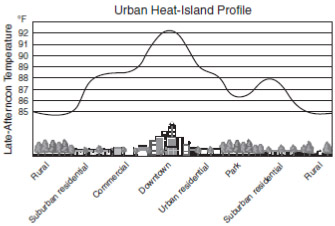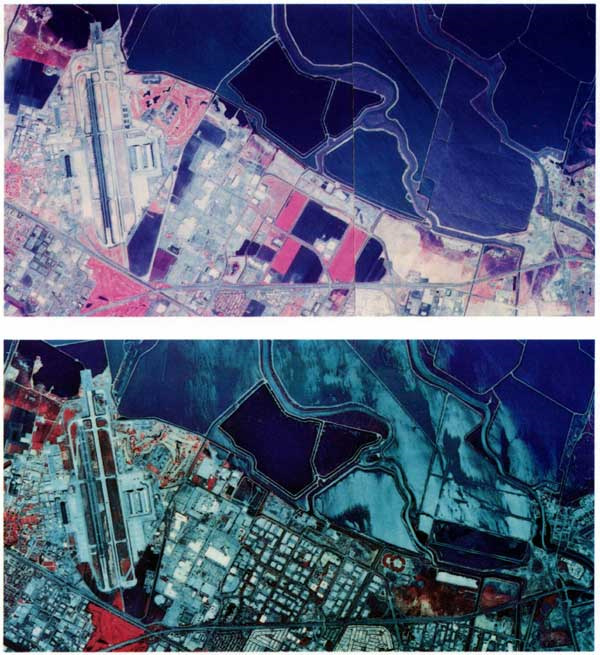
Source: Urban Heat-Island Profile, Texas Education Agency
Urbanization has led to greater exchange of ideas, a wider availability of goods and services from a greater number of merchants, crowded living quarters and higher prices for those homes (think New York City and the high rents), to name a few. But those are just economic and cultural effects of growing cities.
There are environmental effects as well. For instance, as people flock to cities more roads are built which increases the percentage of the city covered in concrete rather than grass. This heats up the area causing cities to have higher temperature than the country. This is illustrated in the graph below.

Source: Urban Heat-Island Profile, Texas Education Agency
Often as coastal areas are built up for tourism or housing, wetlands and other wildlife habitats are lost. In the following map, you can see how the wetlands around San Francisco were lost due to increasing urbanization.

Source: Coastal Wetlands and Sediments of the San Francisco Bay System, U.S. Geological Survey
About the photos: These images of the extreme South San Francisco Bay are two-color infrared (CIR) aerial photographs taken ten years apart; these photographs are used to examine changes in the water and on land:
Reflection:
![]() Watch the first 6:16 minutes of this video to see the social, economic, and environmental effects of urbanization in Baltimore.
Watch the first 6:16 minutes of this video to see the social, economic, and environmental effects of urbanization in Baltimore.
Sociology Project, Leenebee, YouTube